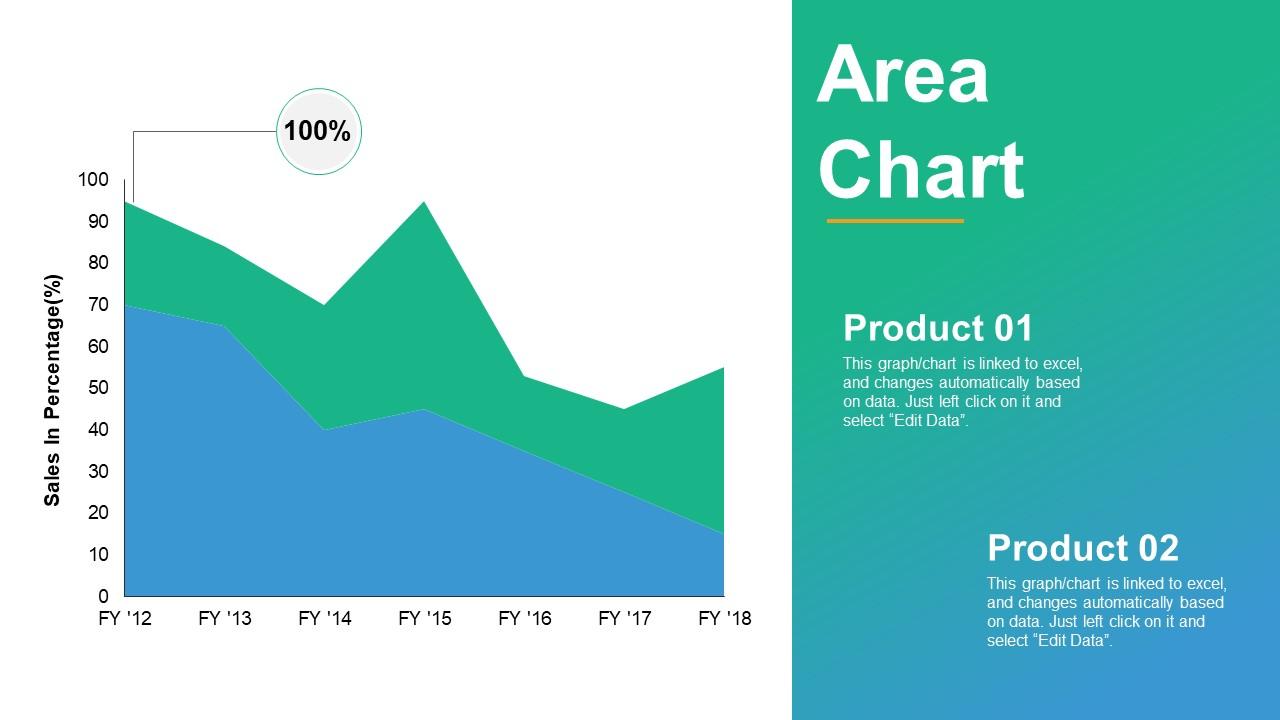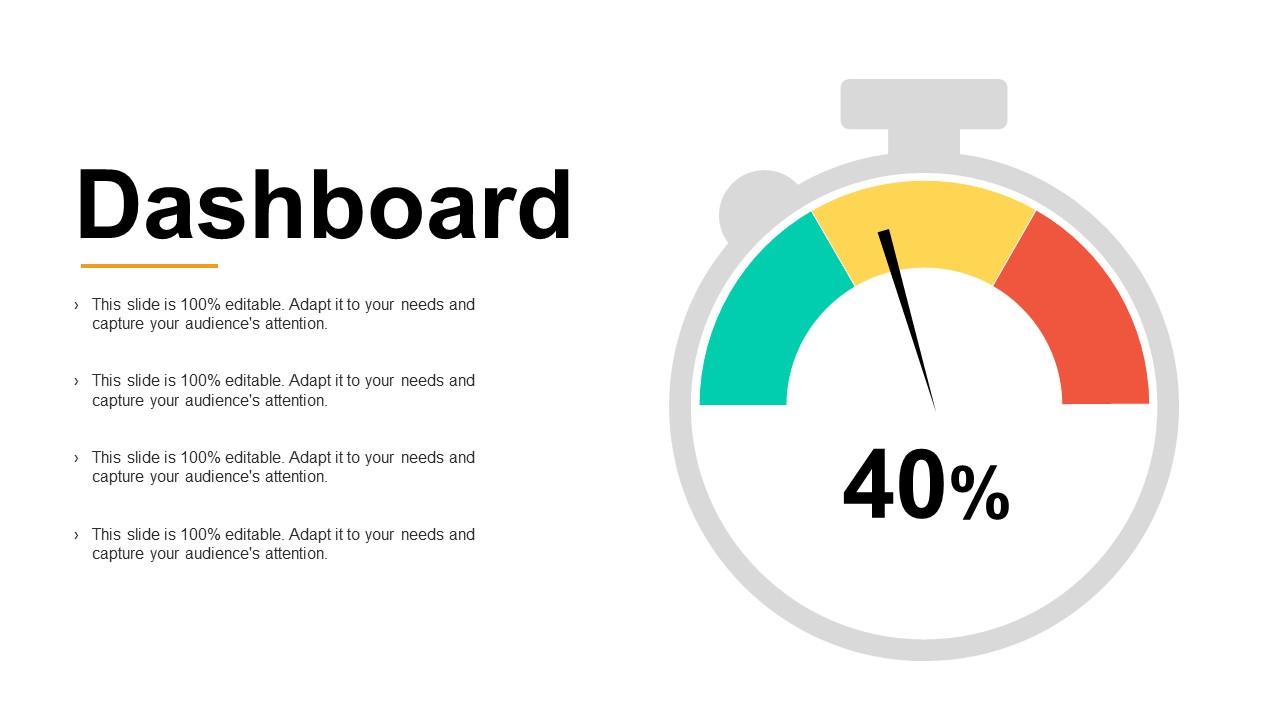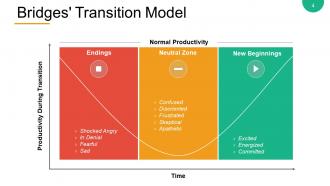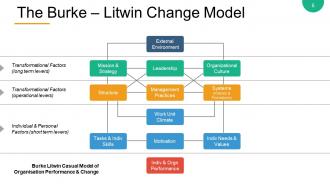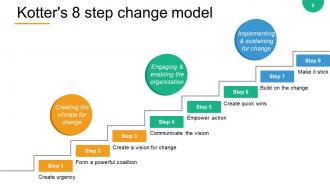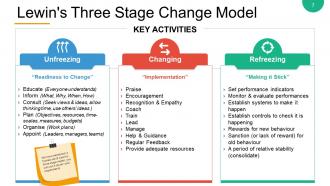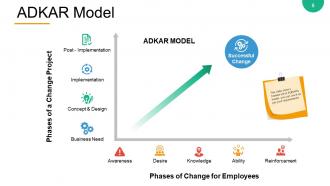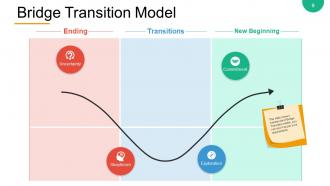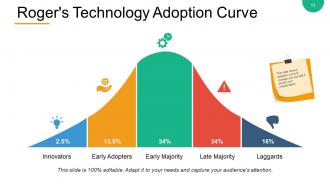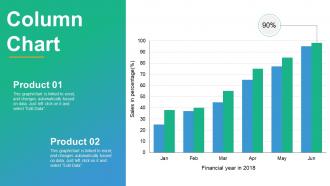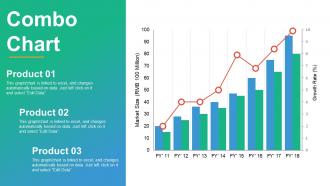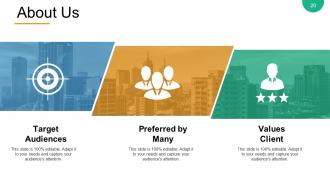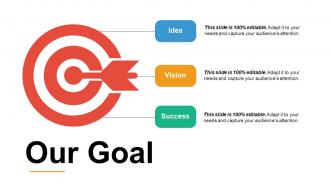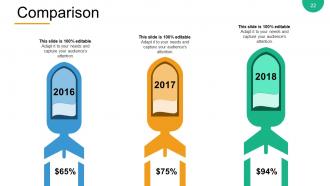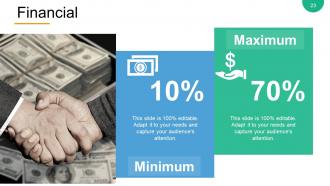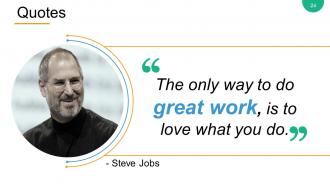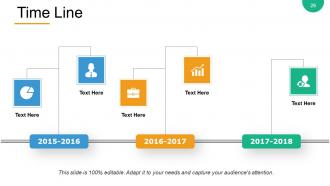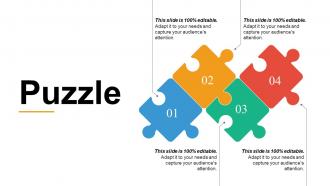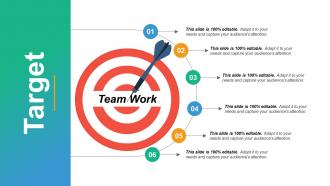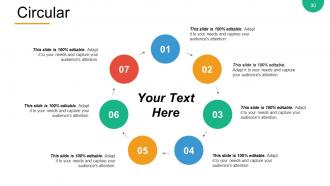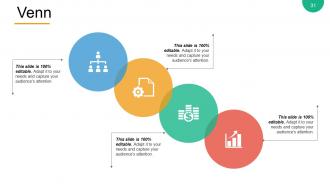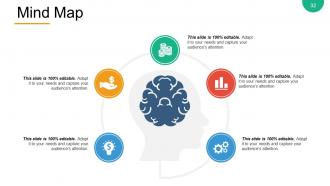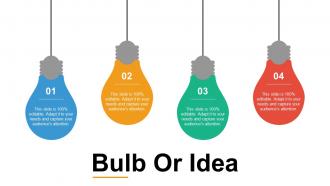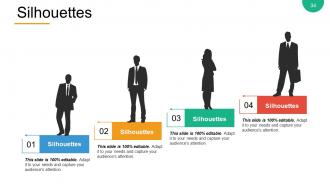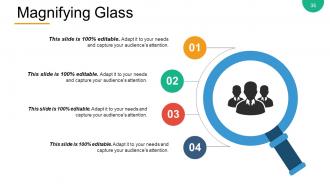Change Management Models Powerpoint Presentation Slides
Demonstrating a change management model through a presentation to the management is not a simple task. You require a lot of time and efforts to design a PPT that can win the heart of the management. To aid you out, SlideTeam has come up with predesigned change management model PowerPoint presentation slides. This change control model PPT presentation has been outlined utilizing a slide on various related subjects such as change curve model, the Johari window, Kotter’s eight phase of change, the ADKAR change model, the McKinsey 7S framework, the Burke Litwin change model, Leavitt’s diamond, three-stage change model, and Bridges transition model. With the help of these business change framework presentation slides, you can describe the tasks needed to prepare, plan, and develop business changes successfully. Use these organization change model PowerPoint slides to showcase the idea of change management, business change, business transformation, organization change, change control, and business process. Impress your audience with this editable change management models PPT slides. Folks find it easy to absorb the concept due to our Change Management Models Powerpoint Presentation Slides. It ensures your ideas don't jar.
- Google Slides is a new FREE Presentation software from Google.
- All our content is 100% compatible with Google Slides.
- Just download our designs, and upload them to Google Slides and they will work automatically.
- Amaze your audience with SlideTeam and Google Slides.
-
Want Changes to This PPT Slide? Check out our Presentation Design Services
- WideScreen Aspect ratio is becoming a very popular format. When you download this product, the downloaded ZIP will contain this product in both standard and widescreen format.
-

- Some older products that we have may only be in standard format, but they can easily be converted to widescreen.
- To do this, please open the SlideTeam product in Powerpoint, and go to
- Design ( On the top bar) -> Page Setup -> and select "On-screen Show (16:9)” in the drop down for "Slides Sized for".
- The slide or theme will change to widescreen, and all graphics will adjust automatically. You can similarly convert our content to any other desired screen aspect ratio.
Compatible With Google Slides

Get This In WideScreen
You must be logged in to download this presentation.
PowerPoint presentation slides
Presenting Change Management Models PowerPoint Presentation Slides. This presentation comprises 36 professionally designed PowerPoint slides, all of them being hundred percent adjustable in PowerPoint. Text fonts type and dimension, colors and background of the PPT templates are customizable. Use data driven charts and graphs to highlight the stats. You can download the templates slides in both broad screen (16:9) and standard screen (4:3) aspect ratio. The PowerPoint slides are completely compatible with Google Slides and other online programmes. The presentation can be saved in numerous formats such as JPG or PDF. The presentation slides can be individualized by inserting an organization name, trademark or logo. Premium product support is provided.
People who downloaded this PowerPoint presentation also viewed the following :
Content of this Powerpoint Presentation
Slide 1: This slide introduces Change Management Models. State the name of your company and begin.
Slide 2: This slide shows Change Management Models in a circular form. Various models used in change management process have been listed here. You can choose one or more models based on your requirement.
Slide 3: This slide shows Mckinsey 7S Framework which include- Strategy, Style, Skills, Staff, Structure, Systems, Shared Values.
Slide 4: This slide shows Bridges' Transition Model which further shows - Productivity During Transition, Time, Normal Productivity.
Slide 5: This slide shows The Burke – Litwin Change Model with points and further subpoints- External Environment: Mission & Strategy, Leadership, Organizational Culture, Structure, Management Practices, Systems (Policies & Procedures), Work Unit Climate, Motivation, Tasks & Indiv Skills, Indiv Needs & Values, Indiv & Orgn Performance, Transformational Factors (long term levers), Transformational Factors (operational levers), Individual & Personal Factors (short term levers), Burke Litwin Casual Model of Organisation Performance & Change.
Slide 6: This slide shows Kotter's 8 step change model- Step 1- Create urgency, Step 2- Form a powerful coalition, Step 3- Create a vision for change, Step 4- Communicate the vision, Step 5- Empower action, Step 6- Create quick wins, Step 7- Build on the change, Step 8- Make it stick.
Slide 7: This slide shows Lewin's Three Stage Change Model: Unfreezing, Changing and Refreezing. We have mentioned Lewin’s three stage model, you can use it as per your requirements.
Slide 8: This slide shows framework of ADKAR’s model, you can use it as per your requirements.
Slide 9: This slide shows framework of Bridge Transition Model, you can use it as per your requirements.
Slide 10: This slide shows Szpekman's Communication Framework with- Knowledge / Skill Emphasis, Measures, Rewards, Structure / Process, Leadership. You can use it as per your requirements.
Slide 11: This slide shows Roger's Technology Adoption Curve. You can edit it as per your requirements.
Slide 12: This slide shows a Coffee Break image. You can alter the content as per need.
Slide 13: This is a way forward to Chart & Bar Graph slides. Alter the content as per your need.
Slide 14: This slide showcases Column Chart with which you can compare the products.
Slide 15: This is an Area Chart slide to show product/ entity growth, comparison, specifications etc.
Slide 16: This is a Combo Chart slide to show information, comparison specifications etc.
Slide 17: This slide is titled Additional Slides to move forward. You can change the slide content as per need.
Slide 18: This slide showcases Our Mission.
Slide 19: This is Our team slide with names and designation.
Slide 20: This is an About us slide to state company specifications etc.
Slide 21: This is Our Goal slide. State your important goals here.
Slide 22: This is a Comparison slide to compare product/ entities etc.
Slide 23: This is a Financial score slide. State financial aspects etc. here.
Slide 24: This is a Quotes slide. State business message, beliefs etc. here.
Slide 25: This is a Dashboard slide to state metrics, kpis etc.
Slide 26: This is a Timeline slide to show evolution, growth, milestones etc.
Slide 27: This is a Location slide on a world map image to show global presence, growth etc.
Slide 28: This is a Puzzle image slide to show information, specifications etc.
Slide 29: This is a Target image slide. State targets, etc. here.
Slide 30: This is a Circular image slide to show information, specifications etc.
Slide 31: This is a Venn diagram image slide to show information, specifications etc.
Slide 32: This is a Mind Map image slide with text boxes to fill information.
Slide 33: This is a Bulb or Idea slide to state a new idea or highlight specifications/ information etc.
Slide 34: This is a Silhouettes slide to show people related information, specifications etc.
Slide 35: This slide shows a Magnifying glass image with text boxes. State information etc. here.
Slide 36: This is a Thank You slide with Address# street number, city, state, Contact Numbers, Email Address.
Change Management Models Powerpoint Presentation Slides with all 36 slides:
Display the goodness of your heart with our Change Management Models Powerpoint Presentation Slides. Be charitable in your comments.
FAQs
Change Management Models are frameworks that help organizations plan, implement, and manage changes in their operations, processes, or systems. These models provide a structured approach to change management and enable organizations to achieve desired outcomes.
The choice of a Change Management Model depends on various factors such as the type of change, the organization's culture, and the level of resistance to change. You can refer to the different models listed in the circular form on slide 2 and select the one that best suits your organization's needs.
Kotter's 8 step change model involves creating urgency, forming a coalition, creating a vision, communicating the vision, empowering action, creating quick wins, building on the change, and making it stick. The model provides a roadmap for leading successful change in an organization.
Lewin's Three Stage Change Model involves unfreezing the current state, making the desired change, and refreezing the new state. The model is a popular approach to change management and is based on the idea that change involves both an intellectual and emotional shift.
The ADKAR model is a change management framework that focuses on individual change. The acronym stands for Awareness, Desire, Knowledge, Ability, and Reinforcement. The model helps individuals understand and embrace change by focusing on these five stages of change.
-
Commendable slides with attractive designs. Extremely pleased with the fact that they are easy to modify. Great work!
-
Great designs, Easily Editable.
















